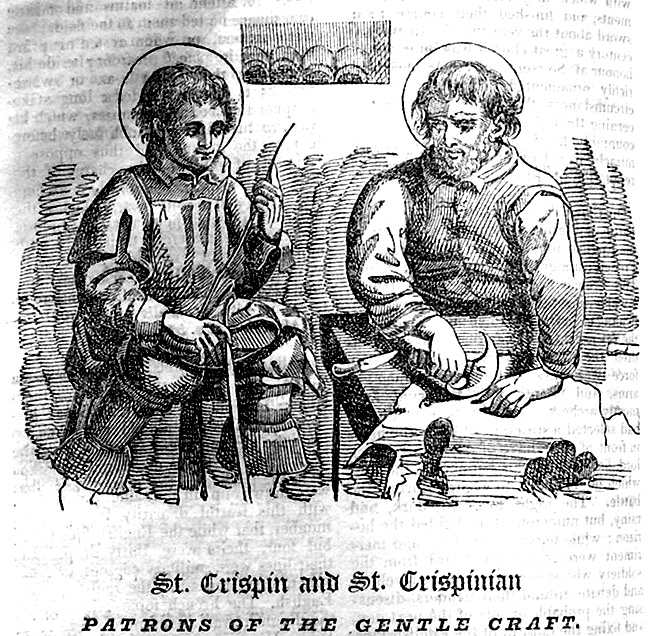Follow Erik Loomis on Twitter
Historian Erik Loomis on This Day in Labor History: July 28, 1869 — The Daughters of St. Crispin was founded. This was the first national women’s labor union in American history and, while short lived, a great example of early women’s strike activism!
The Daughters of St. Crispin held their founding meeting in Lynn, Massachusetts, already a center of the American labor movement. In 1860, a strike of shoemakers in Lynn shook the nation, getting an endorsement from Abraham Lincoln.
Although not a strictly female strike, women’s demands for higher wages played a key role in it. The Daughters were a descendant of that strike, with many participants in the former playing a critical role in the latter.
The name came from an offshoot of a men’s shoemakers union named the Knights of St. Crispin, which was founded in Wisconsin in 1867. The Daughters, building on both the Knights and their Lynn foundations, was mostly a union of shoemakers.
It had a quick growth spurt after the founding convention. By the end of the year, there were 24 lodges in 8 states. Mostly they were in the northeast, but also in Illinois in California. Its president was named Carrie Wilson and the VP was Abbie Jacques.
In the 1870, convention the Daughters created a concrete demand of equal pay with men for equal work. In 1872, 300 members of the union went on strike in Stoneham, Massachusetts.
It failed, but another strike that year in Lynn succeeded and provided a key early victory for the union.
Because most of these workplaces employed men and women, it was necessary for the respective unions to work together.
It would make sense for us today that both men and women would be in the same union, but that was not the case in the early 1870s, when women’s work was seen as something that strong union workplaces for men would forestall because men could feed their families on their salaries.
Anyway, the women and men did not always agree, even when they struck together, And when there were divisions, the women tended to be more militant. So in one case, the Knights and Daughters struck together.
When employers demanded that workers pay a $5 employment deposit that they would lose if they quit within three months, the men accepted it. But the women did not, refusing such a ridiculous demand.
They continued to strike and while they did not win that demand, a year later, they went on strike over the same issue and did win the elimination of it. Another 1872 strike won significantly higher wages for women in Lynn.
In 1874, members of the Daughters testified before Congress for the need for laws that lowered the maximum hours per day for women and children to ten. But by that time, the union was in rapid decline.
The Panic of 1873 devastated industries such as shoemaking. The last national convention of the Daughters was in 1872. By 1875, there wasn’t much of a national organization left. But that didn’t mean that all of these local chapters fell apart.
By 1876, the Lynn chapters had reconstituted and were pretty strong. Some remained strong enough to join the Knights of Labor years later.
There’s not really that much to say about the Daughters of St. Crispin. It was a short lived organization that didn’t engage in iconic actions remembered today.
But we can use it as a moment to remember that despite beliefs about the past and present which say that “real work” is inherently masculine, women have always been as central to capitalism as men.
Moreover, their work, often unappreciated and underpaid, has also led to a tradition of unionism as strong and proud as that of men.

